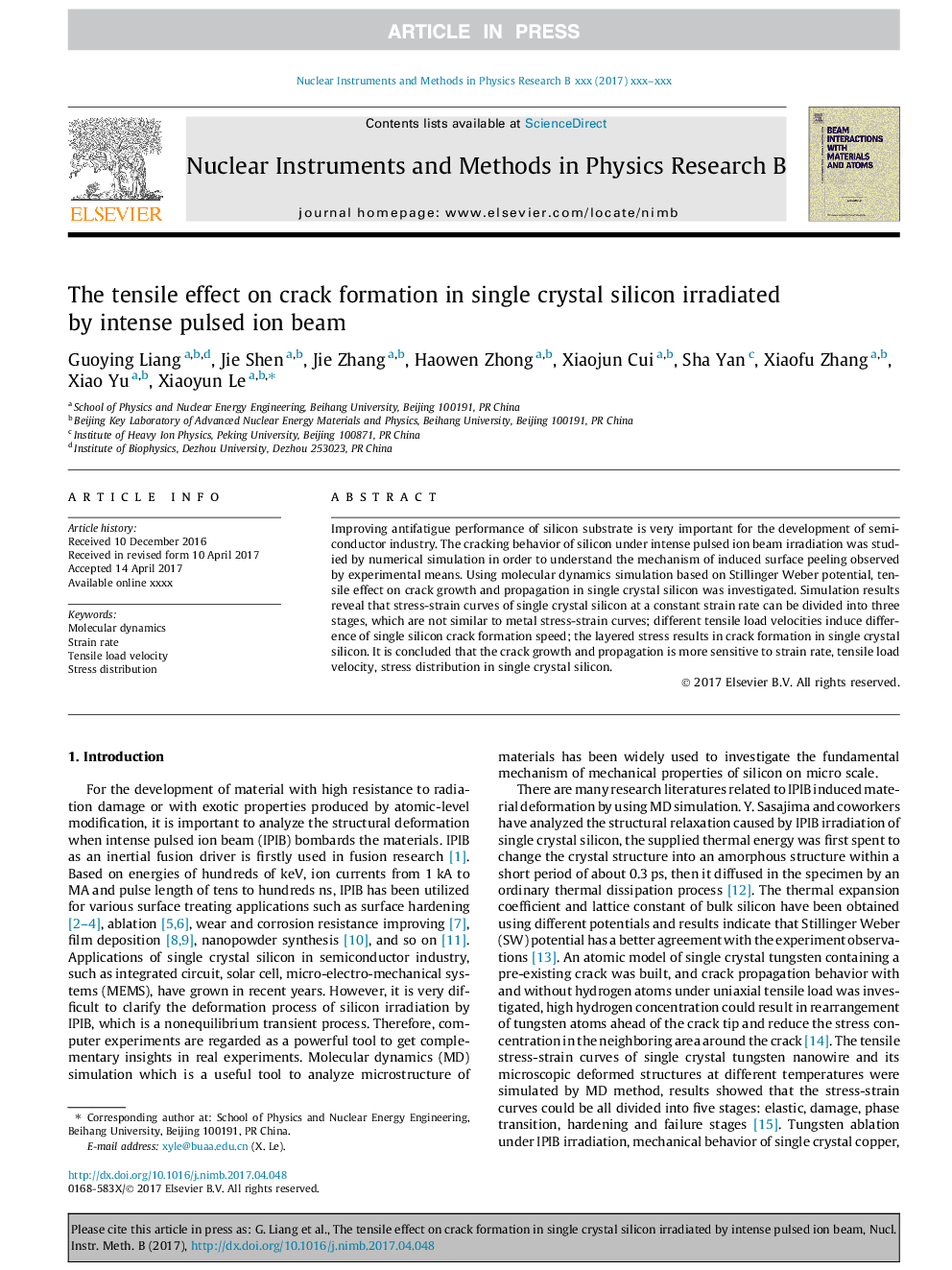| Article ID | Journal | Published Year | Pages | File Type |
|---|---|---|---|---|
| 5467267 | Nuclear Instruments and Methods in Physics Research Section B: Beam Interactions with Materials and Atoms | 2017 | 5 Pages |
Abstract
Improving antifatigue performance of silicon substrate is very important for the development of semiconductor industry. The cracking behavior of silicon under intense pulsed ion beam irradiation was studied by numerical simulation in order to understand the mechanism of induced surface peeling observed by experimental means. Using molecular dynamics simulation based on Stillinger Weber potential, tensile effect on crack growth and propagation in single crystal silicon was investigated. Simulation results reveal that stress-strain curves of single crystal silicon at a constant strain rate can be divided into three stages, which are not similar to metal stress-strain curves; different tensile load velocities induce difference of single silicon crack formation speed; the layered stress results in crack formation in single crystal silicon. It is concluded that the crack growth and propagation is more sensitive to strain rate, tensile load velocity, stress distribution in single crystal silicon.
Related Topics
Physical Sciences and Engineering
Materials Science
Surfaces, Coatings and Films
Authors
Guoying Liang, Jie Shen, Jie Zhang, Haowen Zhong, Xiaojun Cui, Sha Yan, Xiaofu Zhang, Xiao Yu, Xiaoyun Le,
